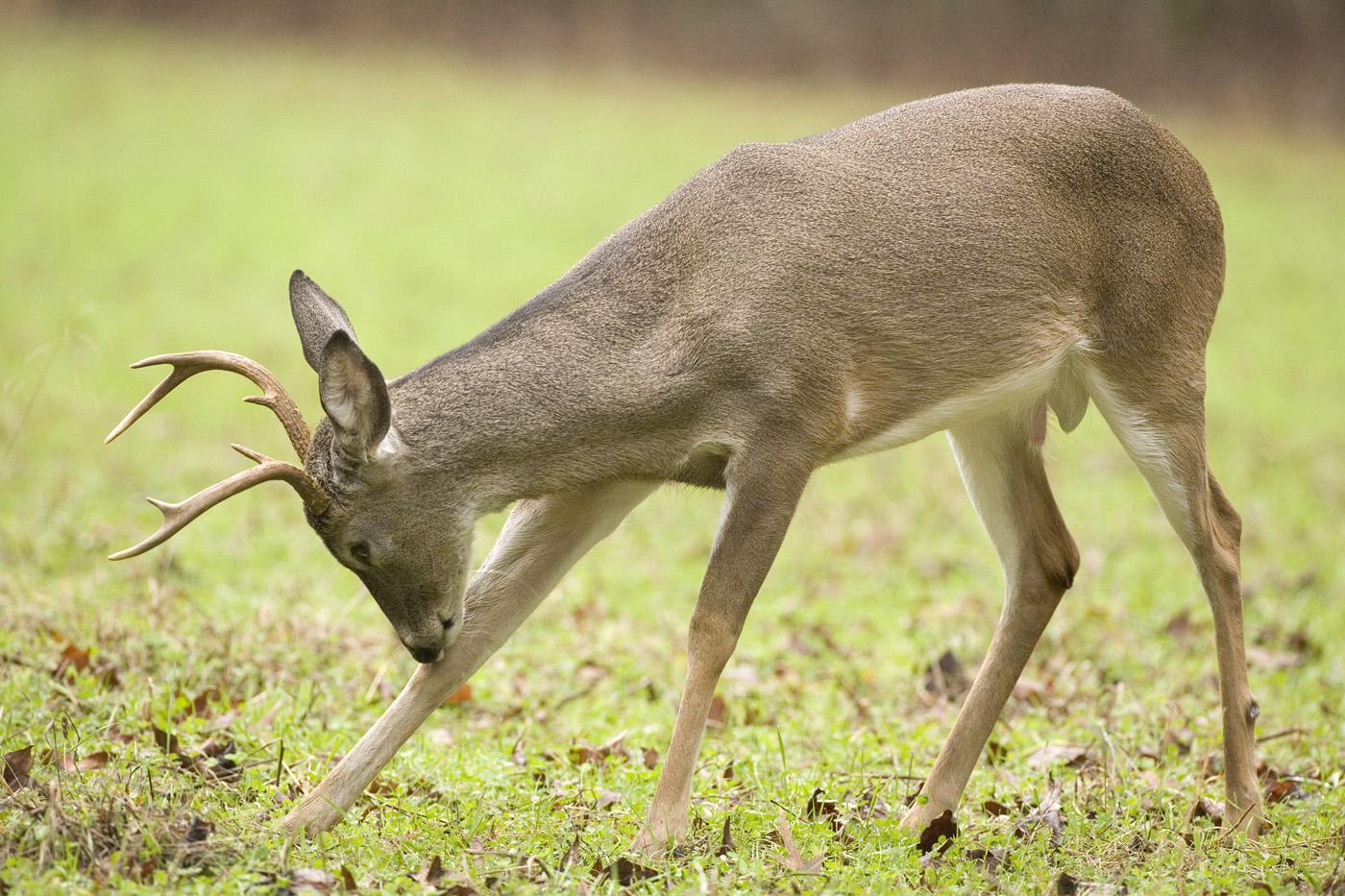Information Possibly Outdated
The information presented on this page was originally released on November 19, 2009. It may not be outdated, but please search our site for more current information. If you plan to quote or reference this information in a publication, please check with the Extension specialist or author before proceeding.
Protecting young bucks increases herd potential
MISSISSIPPI STATE -- Mississippi State University research has found that protecting young bucks improves herd health and creates a better hunting experience.
The university’s Department of Wildlife, Fisheries and Aquaculture has been conducting deer research for more than 40 years with the goal of improving deer populations throughout the Southeast. A recent study found that protecting young bucks is important because they father nearly a third of all fawns.
“We found through DNA analysis of 1,219 deer that physically immature bucks 1.5 to 2.5 years old fathered 30 percent to 33 percent of the fawns in the three populations we examined,” said Steve Demarais, MSU professor and deer biologist. “This was with larger, more mature males available.”
The myth of the biggest bucks dominating the breeding season and producing next year’s fawns was disproved.
“Our research found that every buck has a chance to contribute to the next generation,” Demarais said. “Social dominance alone does not guarantee reproductive success.”
The research is groundbreaking and furthers the belief that protecting younger bucks improves the health of the deer population. Protecting younger bucks also improves the buck-to-doe ratio, which shortens the breeding season.
New regulations require hunters to examine the inside antler spread and main beam length rather than count antler points. The regulations are based on soil regions throughout the state and broken into three zones.
“Regional variation in antler size can be explained by soil fertility,” Demarais said. “Different soil types, even in the same state, can impact antler growth.”
Demarais said because of the regional differences in soil types and their effects on antler production, one antler criterion alone cannot be used to protect the 1.5-year-old bucks statewide.
“While the four-point rule — deer must have four antlers to be harvested — protected some young bucks, the rule did not provide 100 percent protection of the 1.5-year-old age class,” said Chad Dacus, statewide deer program coordinator for the Mississippi Department of Wildlife, Fisheries and Parks.
“In the last few years, we have seen that the four-point rule allowed the harvest of quality yearling bucks, while protecting older-aged spikes and three-point bucks,” Dacus said. “The result has been a decrease in antler size within age classes of older bucks.”
The combination of the four-point law, high hunting pressure and lower reproduction caused by the overharvest of bucks has contributed to a decrease in antler size, Dacus said.
“The overall goal is to increase the size of antlers on bucks and produce a quality deer-hunting experience,” Demarais said. “By allowing young bucks to reach older ages, it creates a healthier deer herd.”







